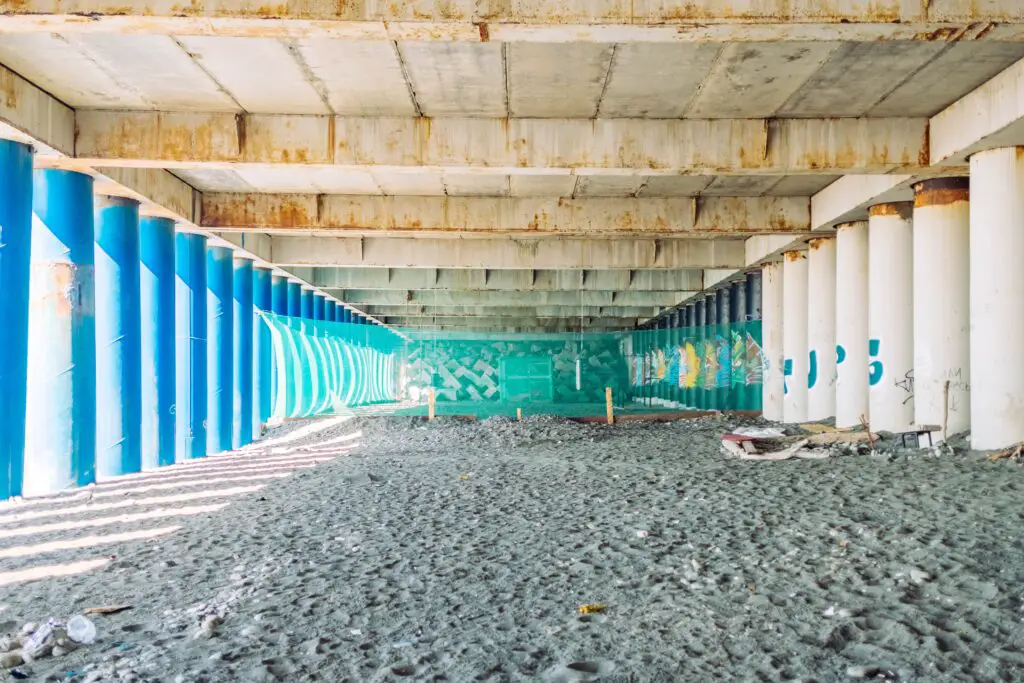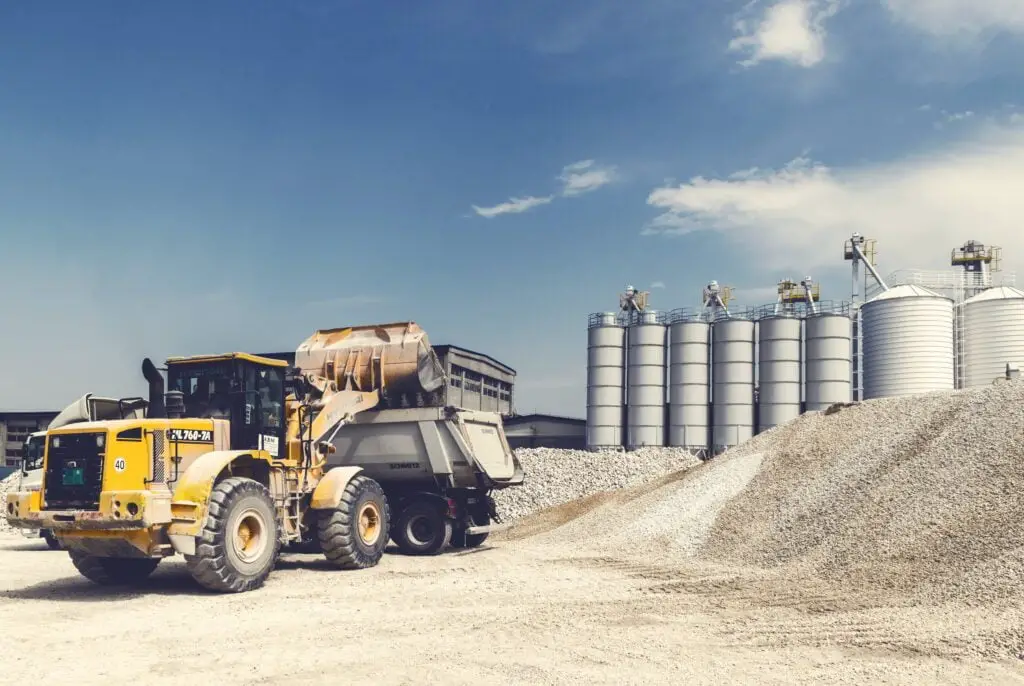What are the main components of a structure?
The highest volume of solid material extracted globally comes from the mining of sand and gravel, which takes place all over the world.
These materials are in demand across a variety of industries, including the manufacture of glass, electronics, and aircraft. However, building and land reclamation are where it is most frequently used.
The building blocks of modern civilisation, aggregates are crucial for communication, infrastructure, and shelter yet are a decreasingly common resource.
How are Sand formed?
Sand is currently being mined at a rate that is much higher than its renewal. Sand was formed by erosive processes over thousands of years.
Additionally, the volume being mined is significantly affecting the ecosystems of rivers, deltas, and coastal and marine waters.

What is Gravel?
A loose collection of rock particles is known as gravel. Gravel is a byproduct of sedimentary and erosive geologic processes that occur naturally across the planet.
It is also produced economically in vast amounts as crushed stone.
Granule- to boulder-sized fragments are included in the size classes for gravel, which are categorized according to particle size range.
What are the categories of Gravel?
Gravel is divided into two categories on the Udden-Wentworth scale: granular gravel (2-4 mm or 0.079-0.157 in) and pebble gravel (4–64 mm or 0.2–2.5 in).
With sizes ranging from 2-6.3 mm to 20-63 mm, ISO 14688 classifies gravels as fine, medium, and coarse. Gravel normally weights around 1,800 kilograms per cubic meter (or a cubic yard weighs about 3,000 lb).
What are the main uses of Gravel?
Gravel is a significant commercial product that has a variety of uses.
The production of gravel is used as concrete aggregate to a degree of almost 50%.
With or without asphalt or other binders, a large portion of the remaining material is used in the construction of roads, either as the road base or as the road surface.
Naturally occurring porous gravel deposits offer significant aquifer potential.
What is Sand?
Sand is a granular substance made up of tiny mineral fragments.
The content of sand varies, but the grain size is what distinguishes it.
Sand is coarser than silt and has smaller grains than gravel.
A soil type or textural class that contains more than 85% of its mass in sand-sized particles is referred to as sand.
The composition of sand varies based on the local rock sources and conditions, although silica (silicon dioxide, or SiO2), typically in the form of quartz, is the most prevalent component in inland continental settings and non-tropical coastal settings.
What is Panambak?
Depending on the structural requirements, backfill may be composed of the same soil that was removed during excavation or it may be a combination of imported soil, boulders, and stones.
Ground studies will determine whether backfilling is necessary, and the engineers will utilize this information to create a design. Backfill is measured in m3 units.
Excavated dirt from the excavation operation is saved for subsequent use.
The previously set aside dirt is utilized to backfill the foundation or other structural areas after foundations or other concrete works are finished.
Excess dirt may be removed from the project site or saved for use in other areas at a later time.
Excavated material needs to be shielded from the elements when storing it for later use. Stockpiles of excavated material should be organized by class or material type.
The site’s dimensions, soil composition, and design will determine whether it is feasible to backfill with excavated materials.
For instance, certain areas may be so constrained that stockpiling is not a practical option.
The table below shows the latest retail April 2024 prices of gravel and sand in Philippine Peso price per cubic meter and truck loads.
Price and Standard Quantity of Gravel and Sand in the Philippines
| DESCRIPTION | UNIT / QUANTITY | PRICE |
| High Quality G1 Gravel | Cubic Meter | 2200.00 |
| G1 Gravel | Cubic Meter | 2000.00 |
| G1 Gravel | 10 Wheeler Truck | 26500.00 |
| G1 Gravel | 6 Wheeler Truck | 5800.00 |
| G1 Gravel | 30 kg bag | 61.00 |
| 1/2 G1 Gravel | Cubic Meter | 1800.00 |
| G2 Gravel | Cubic Meter | 1640.00 |
| 1/2 G2 Gravel | Cubic Meter | 1580.00 |
| 1/2 Gravel | Cubic Meter | 1900.00 |
| 3/4 Gravel | Cubic Meter | 1760.00 |
| 3/4 Gravel | 10 Wheeler Truck | 20000.00 |
| 3/4 Gravel | 6 Wheeler Truck | 4950.00 |
| 3/4 Gravel | 30 kg bag | 55.00 |
| 3/8 Gravel | Cubic Meter | 1400.00 |
| Bistay or Vibro Sand | Cubic Meter | 1600.00 |
| Bistay or Vibro Sand | 10 Wheeler Truck | 20000.00 |
| Bistay or Vibro Sand | 6 Wheeler Truck | 4600.00 |
| Bistay or Vibro Sand | Elf Truck | 2450.00 |
| Bistay or Vibro Sand | 30 kg bag | 52.00 |
| White Sand | Cubic Meter | 1900.00 |
| White Sand | 10 Wheeler Truck | 17000.00 |
| White Sand | 30 kg bag | 51.00 |
| S1 or Washed Sand | Cubic Meter | 1300.00 |
| Filling Material | Cubic Meter | 1700.00 |
| Crushed Rocks – Panambak | Cubic Meter | 1100.00 |
| Earth Soil – Panambak | Cubic Meter | 910.00 |
UPDATED: Construction Material Prices for Gravel and Sand in the Philippines (April 2024)
UPDATED: All Construction Prices are based on retail prices around hardware in Metro Manila
To see other material construction, please see here.
To know other construction guides, tips, and methodology for beginners, veterans, and contractors, please see here.


My boyfriend works for a construction company and he recent;y told me about their need for concrete sand for sale that they need to use for a project. Thanks for helping me understand that sand contains smaller granules than gravel and is coarser than silt. I had no clue that sand is a soil type or textural class that is composed primarily of particles with a diameter less than sand.
I got this web page from my buddy who told me about this website and now this time I am visiting this web page and reading very informative content at this place.
H, do these sand and gravrl prices include delivery & VAT
ttps://constructph.com/gravel-and-sand-guaranteed-best-construction-material-philippines-prices/